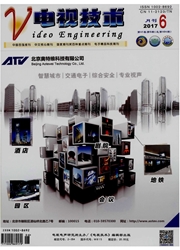

 中文摘要:
中文摘要:
介绍了分布式视频编码(DVC)到传统视频转码的方案,该转码方案适用于移动终端设备之间的视频通信。着重讲述了DVC到H.264的转码,针对转码过程中复杂度高和时延长等问题,利用DVC解码端生成的运动矢量来减少H264编码的工作量,在几乎不影响视频质量的前提下,极大地降低了转码的计算复杂度和时间,提高了转码效率。同时介绍了DVC转到其他传统视频的方法和方案,最后分析了DVC转码在当前移动视频通信市场中存在的巨大潜能,以及对转码技术的未来发展和方向进行了展望。
 英文摘要:
英文摘要:
Some typical transcoding techniques from DVC (distributed video coding) to traditional video coding are introduced in this paper, these techniques are well suited for mobile to mobile communication. Especially, the transcoding techniques from DVC to H. 264 are introduced in detail, in which the high complexity and long delay for transcoding process is one of the most tough issues. To solve it, the motion vector generated in DVC decoding is made full use to reduce H. 264 encoding workload. In this algorithm, the encoding time is decreased and the computational complexity of the transcoder is reduced, which could improve transcoding efficiency under the premise of scarcely affect video quality. In addition, the transcoding methods and programs from DVC to other traditional video coding are also introduced. Furthermore, the application potentials of DVC transcoding in the currently mobile video communications are analyzed. Finally, the challenges and development directions in this filed are pointed out in this paper.
 同期刊论文项目
同期刊论文项目
 同项目期刊论文
同项目期刊论文
 期刊信息
期刊信息
